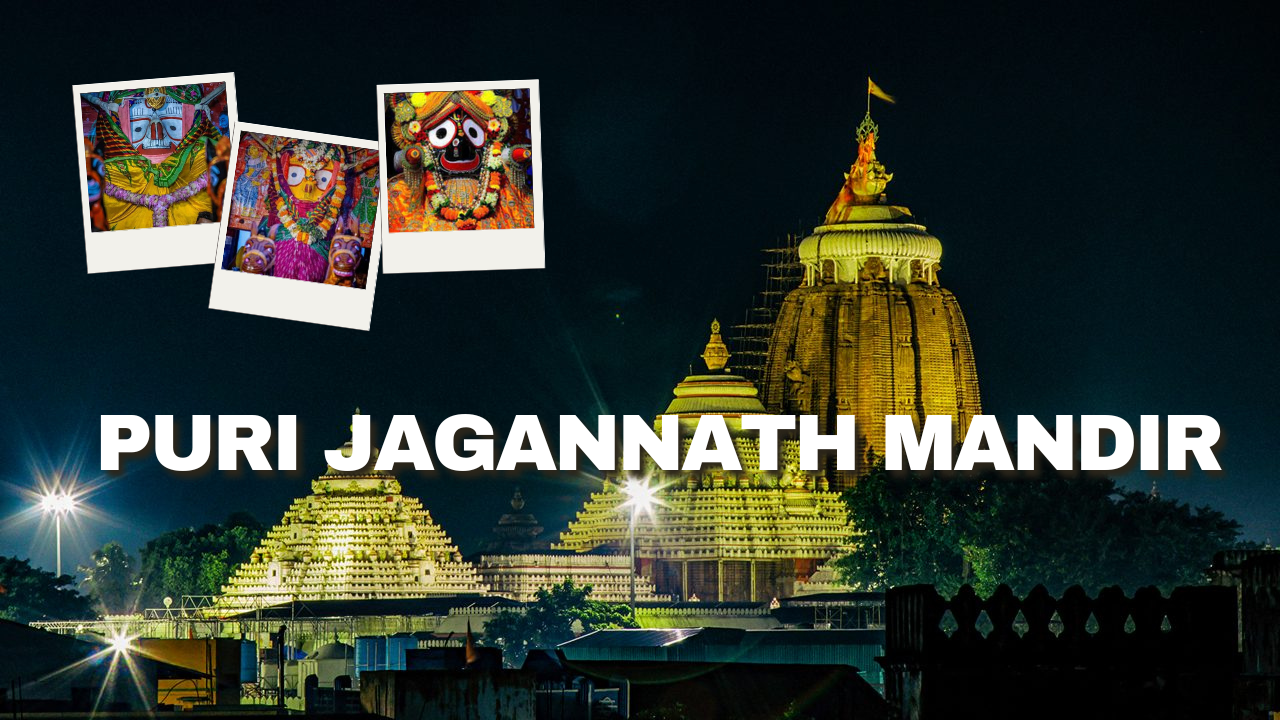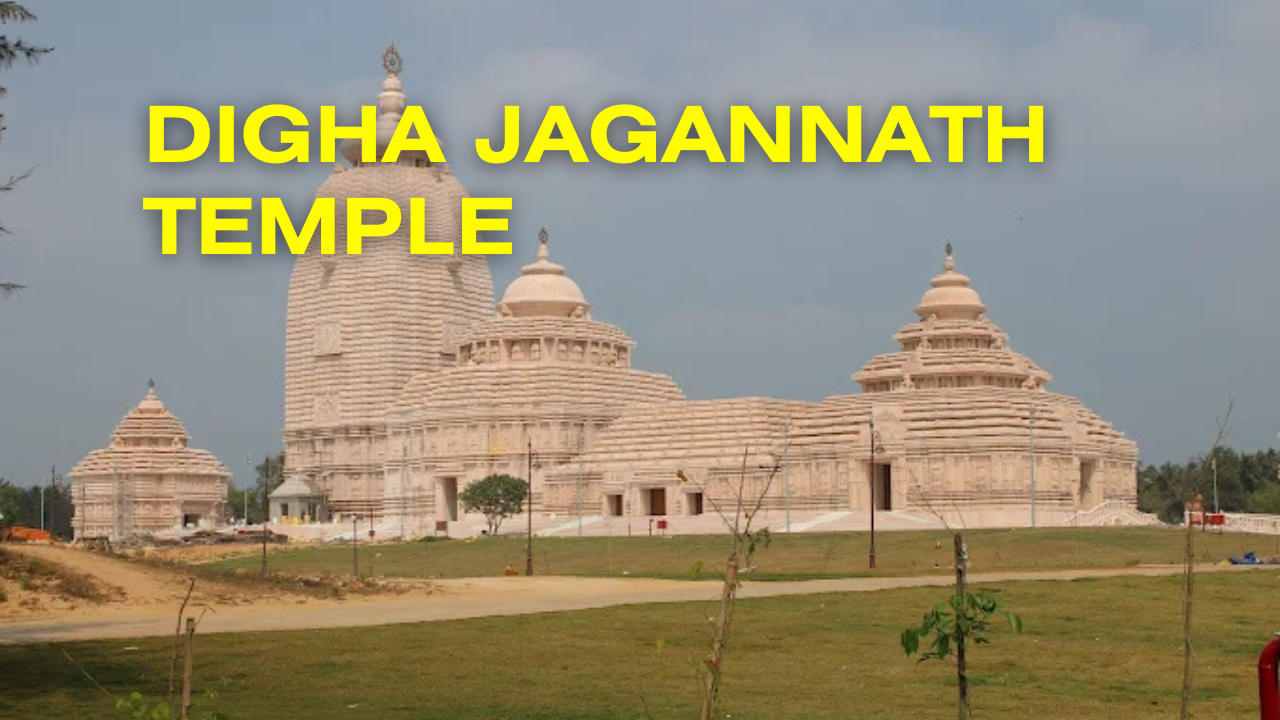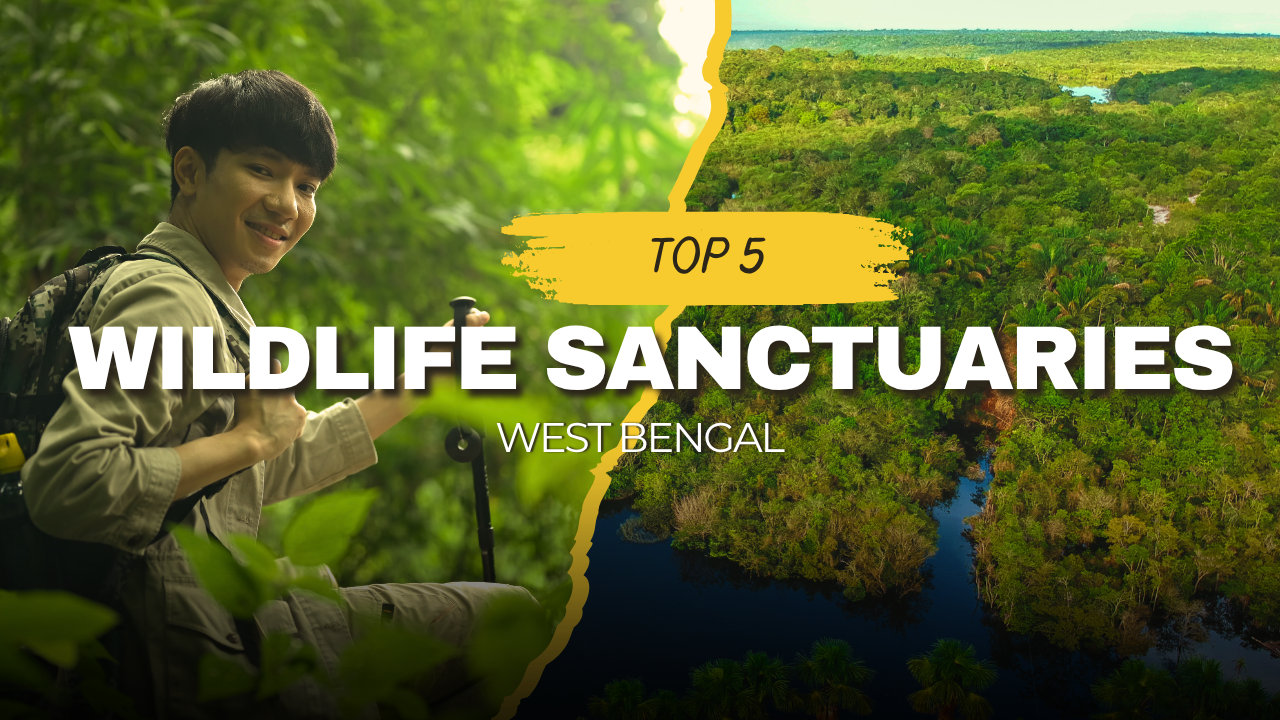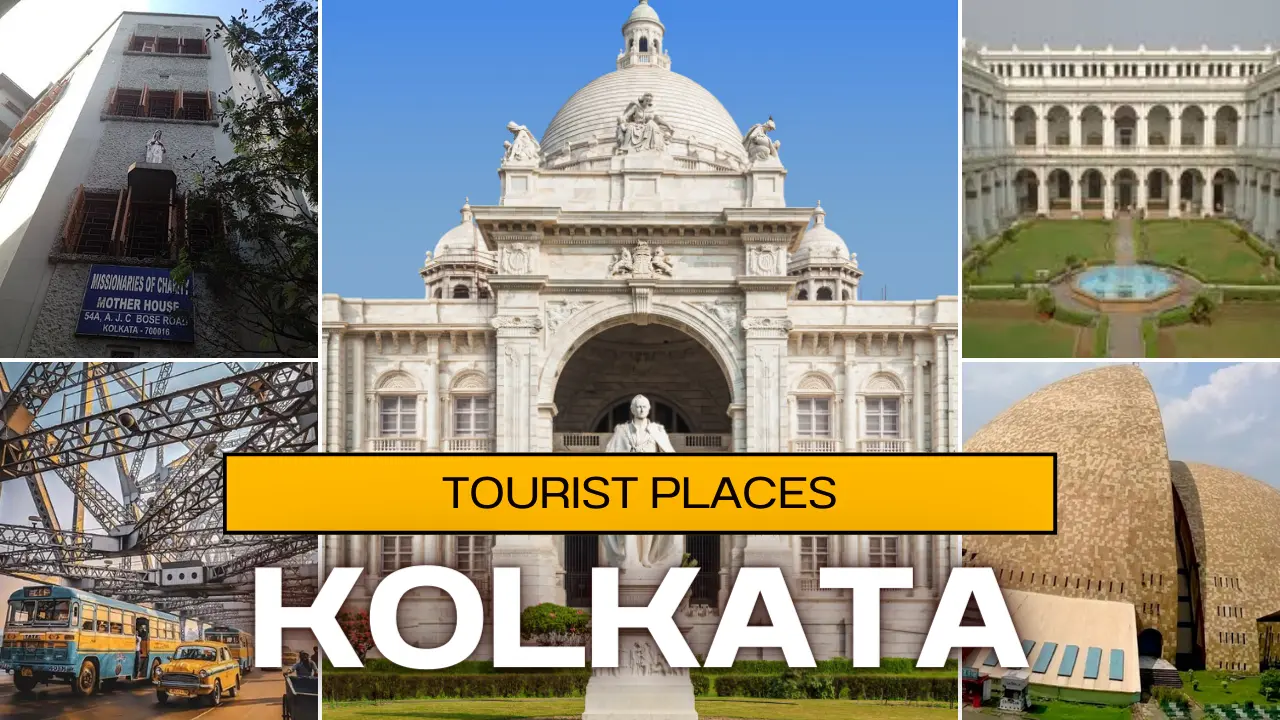
Popular Santiniketan Tourist Spot – Top Places to Explore
Santiniketan is a locality situated in the Bolpur region of Birbhum district, West Bengal, India. Maharishi Debendranath Tagore initially founded it, and his son, the famous Rabindranath Tagore, later developed and expanded the area. Santiniketan is also the site of Visva-Bharati University, which Rabindranath Tagore founded, turning the area into a prominent educational hub. In 2023, Santiniketan was added to the UNESCO World Heritage List, following the announcement made during the 45th session of UNESCO’s World Heritage Committee.
Table of Contents
ToggleHistory of Santiniketan
In 1863 (1270 Bengali calendar), Debendranath Tagore acquired 20 acres of land, featuring two Chatim trees, from Bhuvan Mohan Singh, the landlord of Raipur, for an annual lease of ₹5 (around $0.06 USD). He constructed a guesthouse there and named it “Shantiniketan,” meaning “Abode of Peace.” Over time, the entire region adopted the name Shantiniketan. According to Vinay Ghosh, Bolpur was a modest settlement in the mid-19th century, growing significantly with the establishment of Shantiniketan. Some areas of Bolpur were part of the Raipur Singh family’s zamindari estate. Bhuvan Mohan Singh even established a village in Bolpur, calling it Bhubandanga.
Bhubandanga had a reputation as a hideout for dangerous bandits who didn’t hesitate to commit murder. This led to tensions, but eventually, the leader of the bandits surrendered to Debendranath Tagore, offering their assistance in developing the area. It was under a Chatim tree here that Debendranath often meditated. Inspired by The Crystal Palace in Hyde Park, London, he constructed a 60×30-foot glass house for Brahma worship, with a tiled roof and marble flooring. This structure has been a popular local attraction for many years. On January 27, 1878 (13th Magh 1284), a young Rabindranath Tagore, then 17 years old, made his first visit to Santiniketan.
In 1888 (1295 Bengali calendar), Debendranath transferred the land to a trust for establishing a Brahma Vidyalaya. In 1901 (1308 Bengali calendar), Rabindranath Tagore founded the Brahmacharya Ashram at Santiniketan, which was later renamed Patha Bhavana in 1925 (1332 Bengali calendar). In 1913, Rabindranath Tagore was awarded the Nobel Prize in Literature, adding another chapter to the legacy of the Tagore family, who had long been influential in Bengali culture, including literature, music, painting, and drama. On December 23, 1921 (8 Paush 1328 Bengali calendar), Acharya Brajendranath Shil formally inaugurated Visva-Bharati University in the presence of Rabindranath Tagore. In 1951, it was designated as a central university by the Indian government.
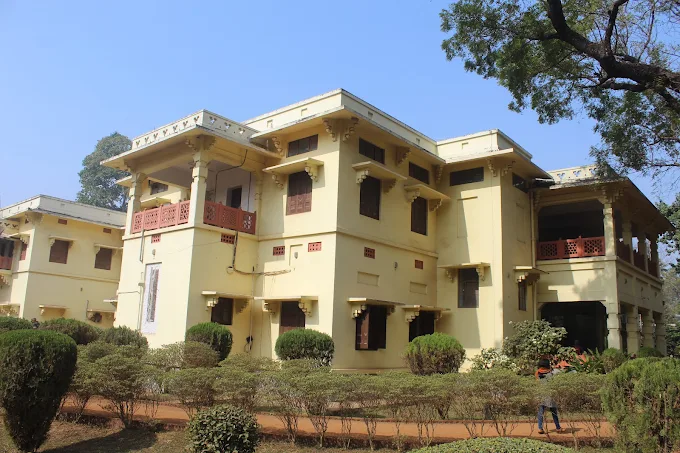
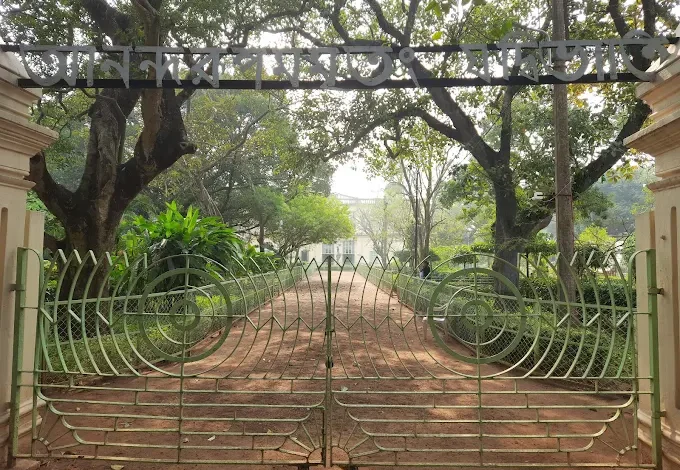
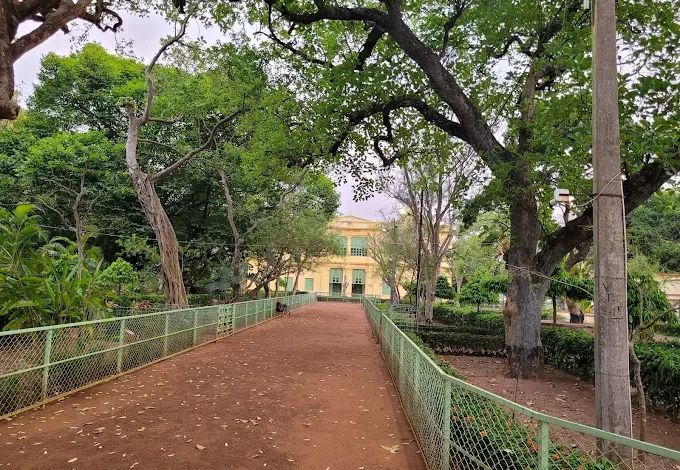
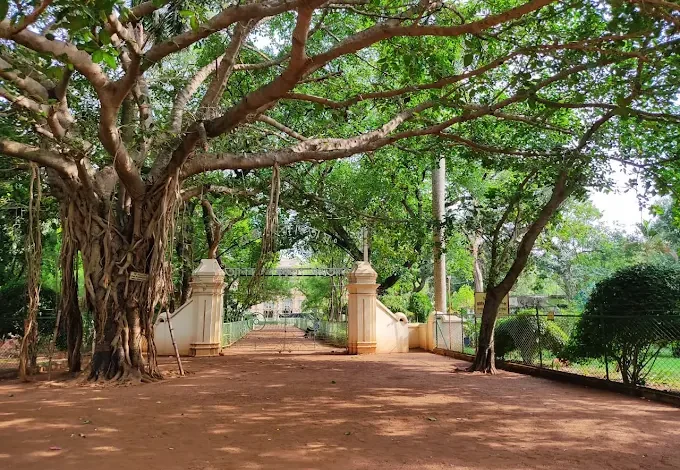
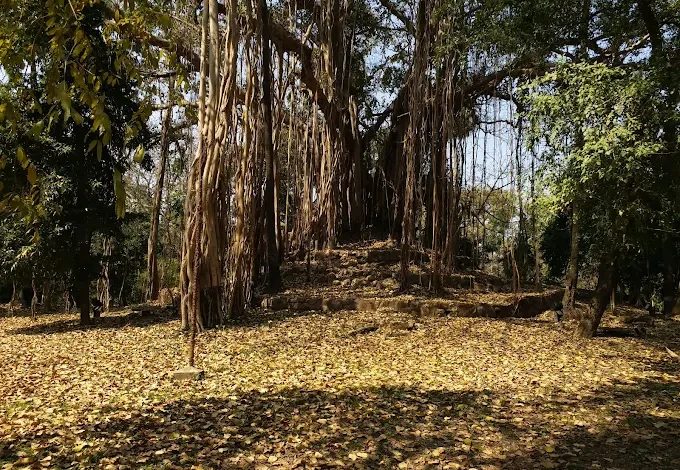
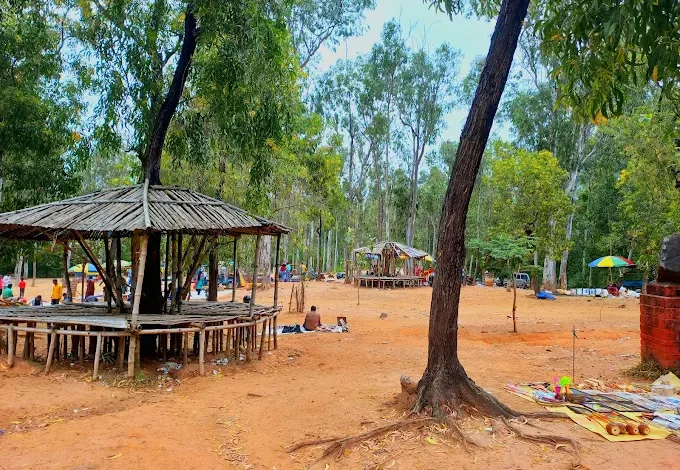
Spring Festival
In Shantiniketan, a joyful and well-orchestrated song and dance event takes place. In the early hours, voices join in song, “ওরে গৃহবাসী, খোল দ্বার খোল, লাগল যে দোল …” Rabindranath’s Shantiniketan never gave way to religious excesses, rigid social norms, or overly traditional practices—especially during the Spring Festival. This festival remains pure and heartfelt, a source of genuine happiness.
Today’s Spring Festival, or Basanta Utsav in Shantiniketan, is an evolved and refined version of the seasonal celebration that first took place on February 17, 1907, during Basant Panchami, led by Shamindranath Tagore. Although it initially coincided with Saraswati Puja, over the years, the festival’s date varied. Considering Rabindranath’s travels abroad or other significant occasions, the ashram community would joyfully gather on a chosen day to welcome the spirit of spring.
Top Places to Explore:
1. Tagore’s Ashram
Rabindranath Tagore spent a significant portion of his life in Shantiniketan, where he wrote many of his renowned poems and essays. The Ashram, which is now a heritage site, was originally established by his father, Maharshi Devendranath Tagore. It preserves a collection of Tagore’s writings, awards, personal belongings, and everyday items used by the legendary poet. The Ashram offers a glimpse into the past, providing a deeper understanding of Tagore’s life and accomplishments. Today, the Ashram features several buildings, each serving a unique purpose, and the entire area inspires a profound sense of tranquility and pride in his enduring legacy.


2. Chattimtala
This is a well-known location where Maharshi Devendranath Tagore, Rabindranath Tagore’s father, used to meditate, as he was a strong believer in the power of reflection and meditation. Students at the institution maintain a deep connection with this spot, as graduates receive a branch from the Saptaparni tree, which grows in Chattimtala, symbolizing their bond with the place. It is a serene and tranquil area, perfect for those seeking a break from the pressures of modern life. Situated near the prayer hall, Chattimtala is regarded as a sacred and calming space.
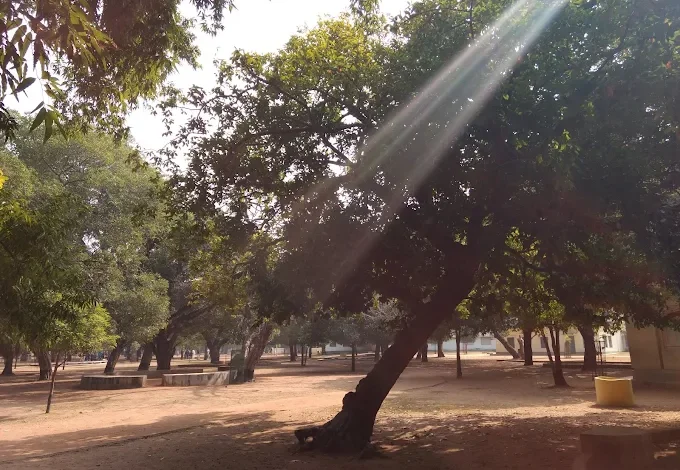
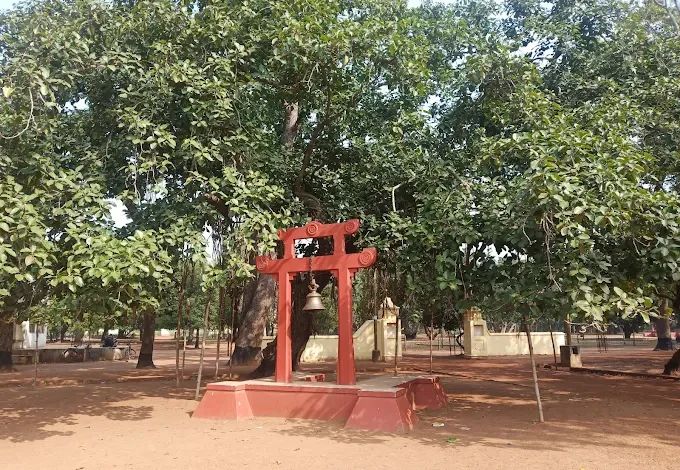
3. Rabindra Bhavan Museum
No trip to Shantiniketan is complete without stopping by the Rabindra Bhavan Museum. For those with a passion for history, this museum offers a deep dive into the life and contributions of Rabindranath Tagore. Founded in 1961, the museum displays a collection of Tagore’s original manuscripts, writings, paintings, photographs, and honors. It’s fascinating to explore the legacy of a man whose literary genius left a timeless impact. The museum was also home to Tagore’s Nobel Prize medal, which was sadly stolen a few years ago.
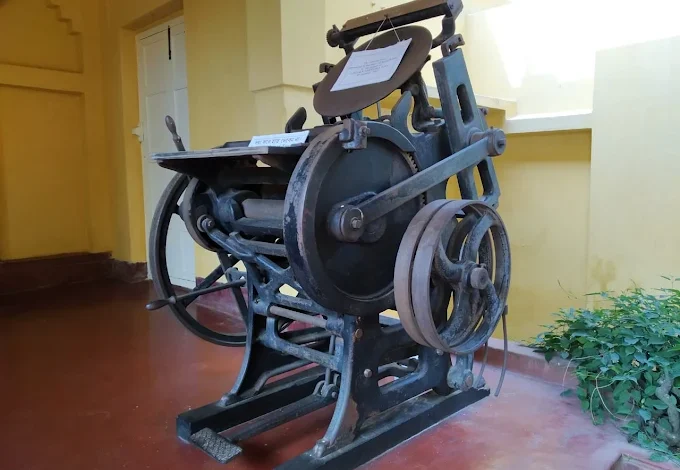
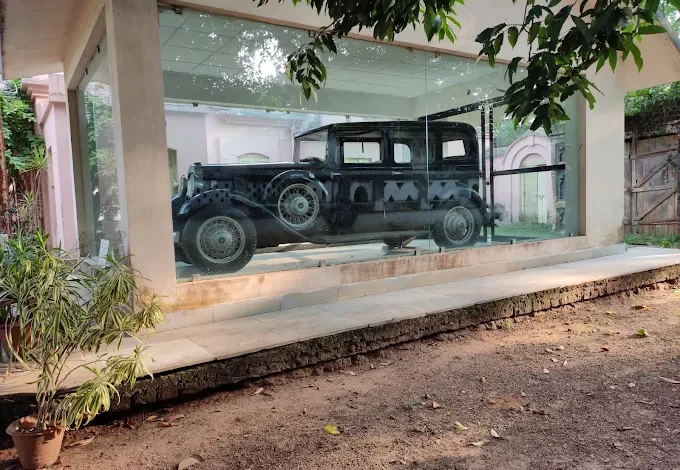
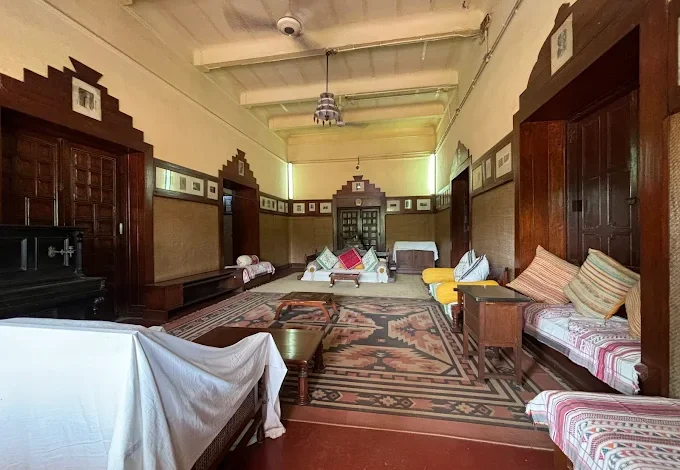
Tagore’s dedication and foresight led to the creation of Shantiniketan’s Visva-Bharati University. In 1901, he established a school called Brahmacharya Ashram, with the aim of embracing the ancient Gurukul system. Tagore envisioned an education that transcended classroom walls, allowing children to learn amidst nature for a more well-rounded experience. Over time, this school grew and evolved into what is now known as Visva-Bharati University—a cherished institution in Shantiniketan, and a source of pride for Bengal and the entire nation.
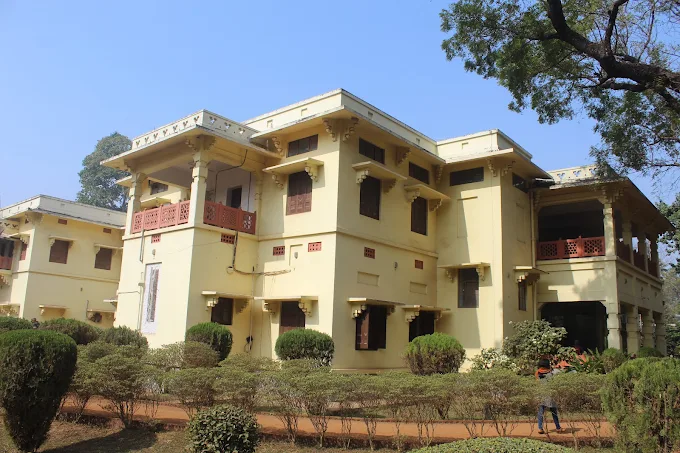
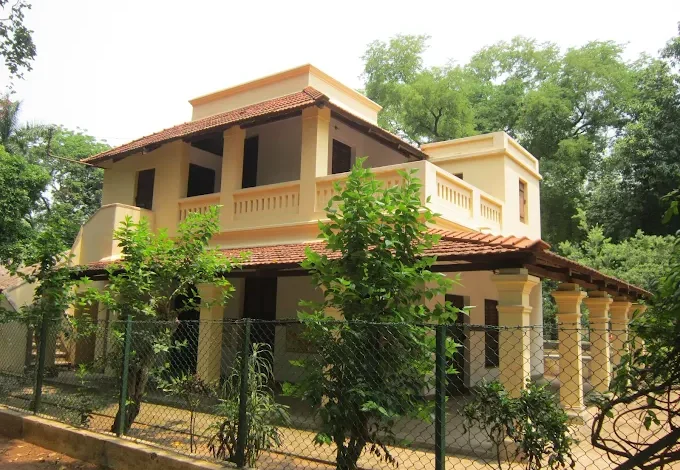
5. Kala Bhavan
This beautifully adorned building is located within the campus grounds. True to its name, “Kala” (meaning arts), it was established to foster an appreciation for the arts among students. It serves as a center for visual arts practice and research in the nation. The main goal is to nurture a creative mindset and cultivate an appreciation for the finer aspects of life through an understanding of the arts.
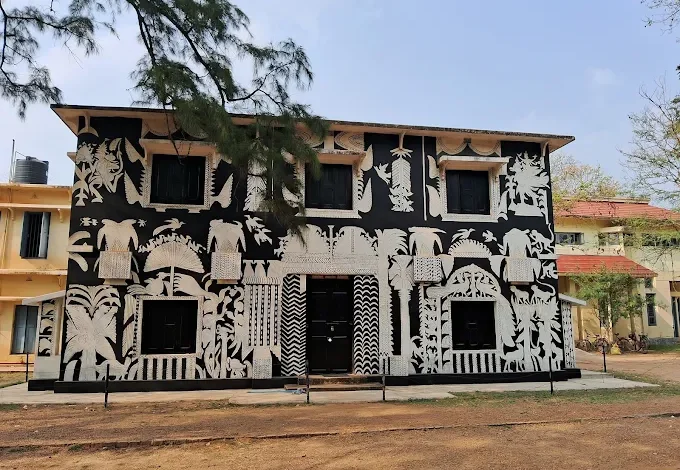
6. Uttarayan Complex
The Uttarayan Complex is where Tagore lived during his time in Shantiniketan. The complex features five distinct houses: Udayana, Konaraka, Punascha, Udichi, and Shamali, each showcasing unique architectural styles. Tagore is said to have resided in Udayana. This heritage building is well-preserved and is a major tourist attraction. In 1863, Maharshi Devendranath Tagore, the father of Rabindranath Tagore, constructed a prayer hall within the complex for Brahmo worship. The complex also displays numerous frescos and exhibits related to Gurudev.
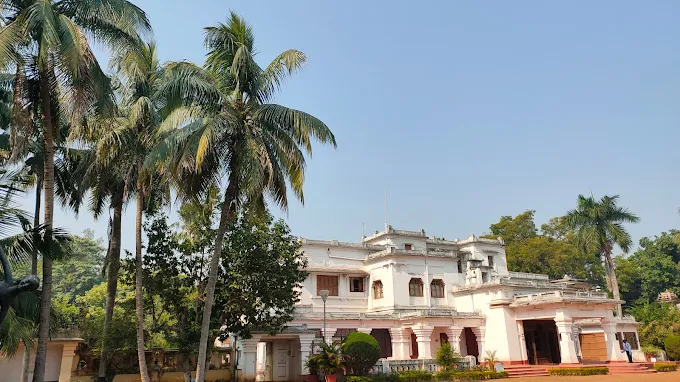
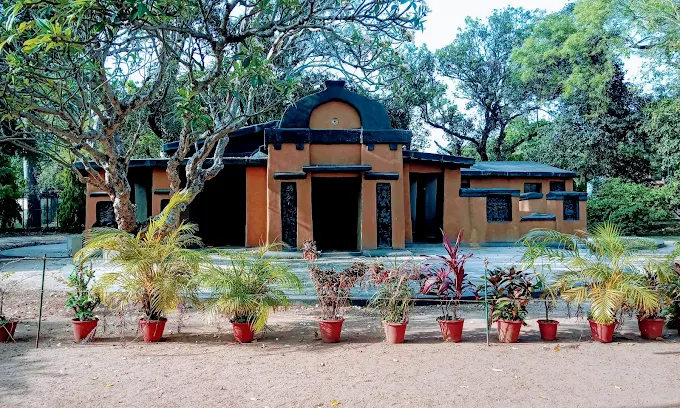
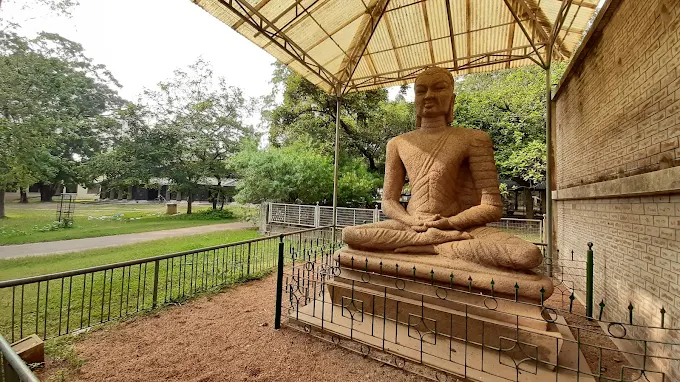
Just 3 km away from the main campus of Shantiniketan lies the Ballavpur Wildlife Sanctuary, commonly known as the Deer Park. Established in 1977, it’s a great spot for an early morning visit to observe herds of deer in their natural setting. The sanctuary is also home to a variety of stunning birds, making it a haven for birdwatchers and photographers alike. The vibrant greenery of the sanctuary adds to its charm, offering a picturesque environment for nature lovers.
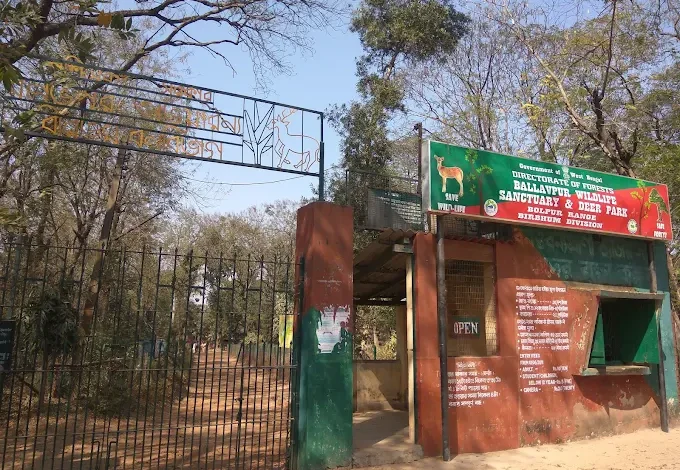
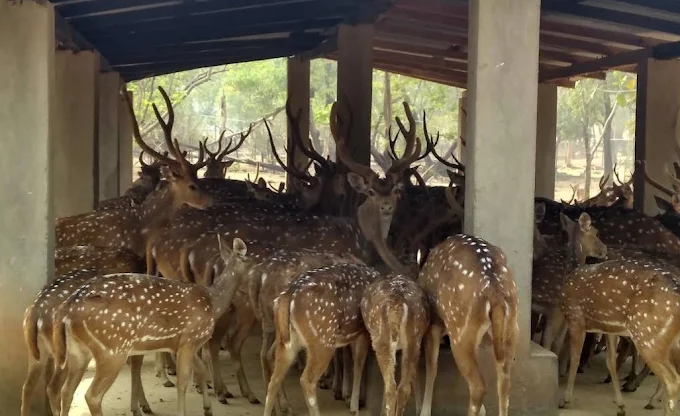
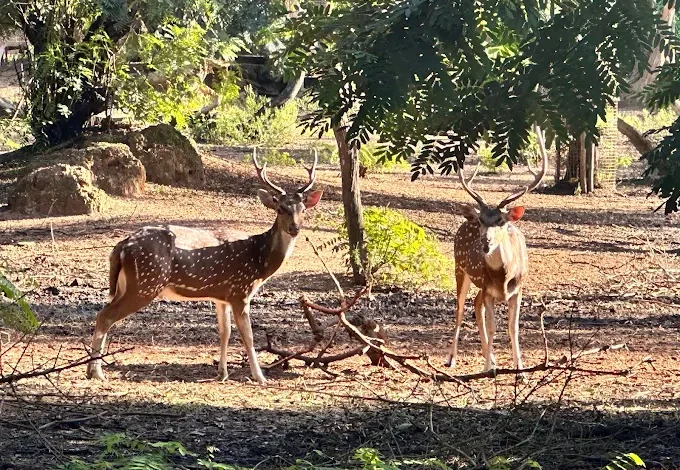
8. Kopai River
The Kopai River, which is a branch of the Bakreshwar River, runs through both Santiniketan and Bolpur. In the dry season, the river has little water, but during the monsoon, it overflows its banks. The surrounding area is often covered in purple soil, creating ravines along the riverbanks due to erosion, a feature known as “khoai.” A visit to the Kopai River is highly recommended for the tranquility it offers. The river has also been a source of inspiration for many literary works, frequently referenced in the poems of Rabindranath Tagore.
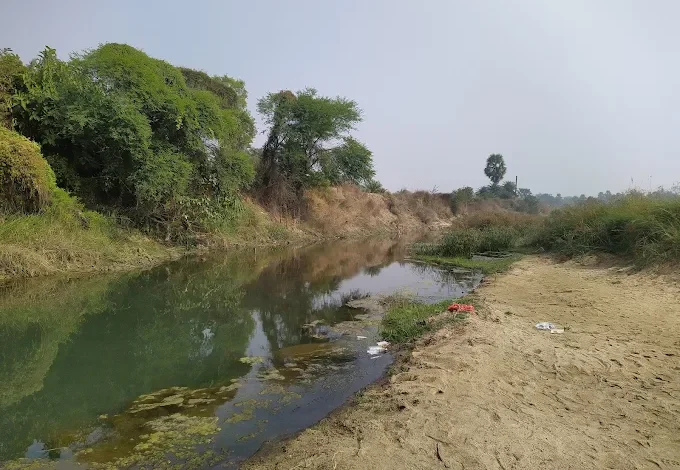
9. Amar Kutir
Amar Kutir, which was once the residence of Rathindranath Tagore, son of Rabindranath Tagore, has now been transformed into a museum honoring his legacy. The museum showcases a rich collection of Rathindranath’s personal items, providing visitors with an insightful look into his life, as well as his contributions to literature and the arts.
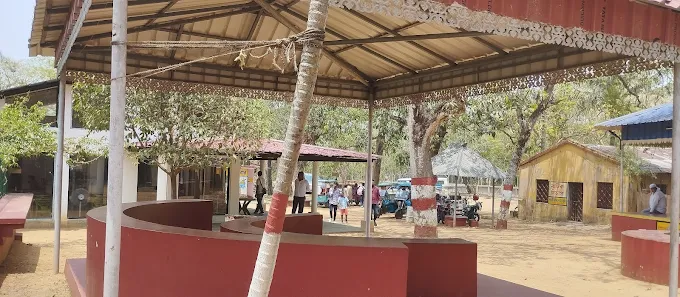
10. Kankalitala Temple
One of the most unique and offbeat destinations near Shantiniketan is the Kankalitala Temple. It is believed that the waist of Sati, known as Kankhal, fell here, making it an important Shakti Peeth. The temple is dedicated to Goddess Shakti (Parvati), but there is also a Shiva Lingam housed in the Shiva Temple on the grounds. Worshippers come to pay their respects and offer prayers to the Goddess. The temple hosts an annual fair on the last day of the Chaitra month, which is considered the best time to visit. The tranquil surroundings of the temple offer a calming retreat for visitors.
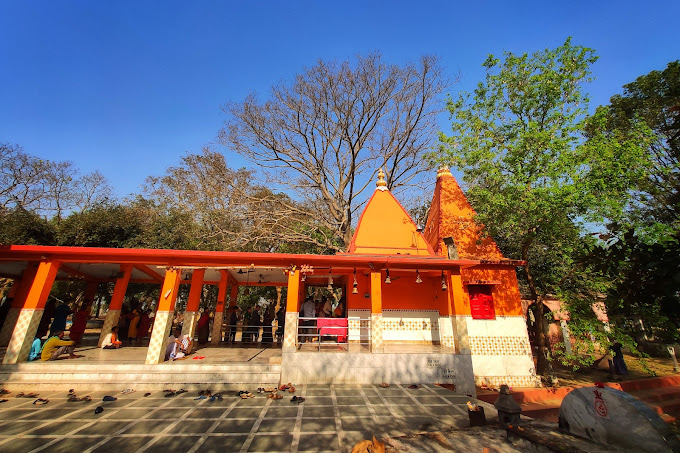
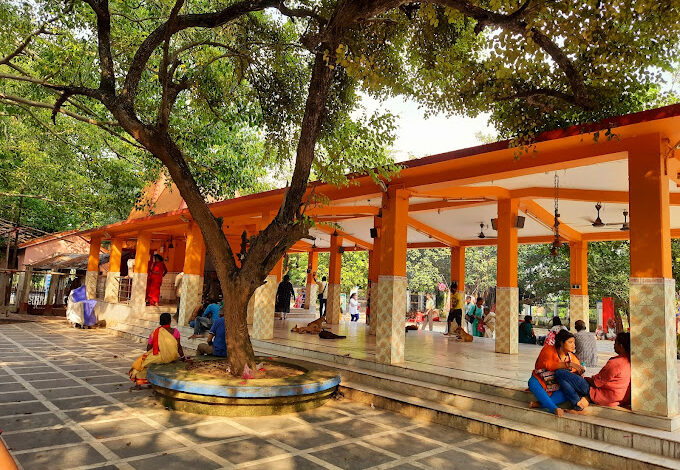
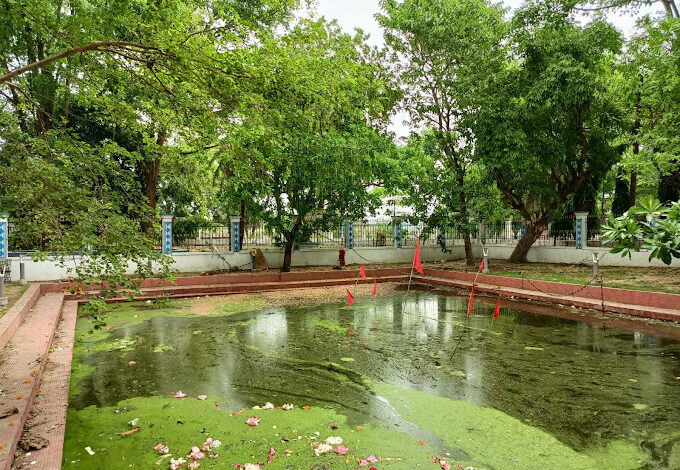
11. Shonajhurir Haat
A visit to the renowned Shonajhurir Haat is a must during any stay in Shantiniketan. It serves as the heart of the town, where vibrant colors, lively atmosphere, and music come together. The haat, or marketplace, is where local artisans gather to showcase their creations, from bangles and jewelry to sarees and other handmade crafts. Food stalls offer delicious treats, while the air is filled with music as the Santhals and Bauls perform, turning the space into a magical realm—exactly as Rabindranath Tagore had envisioned.
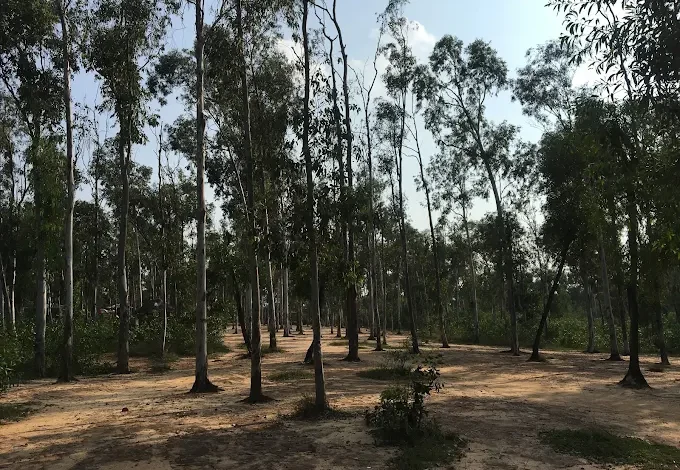
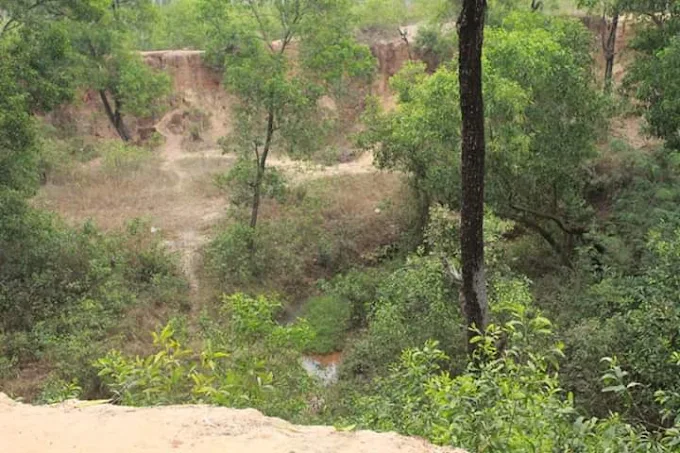

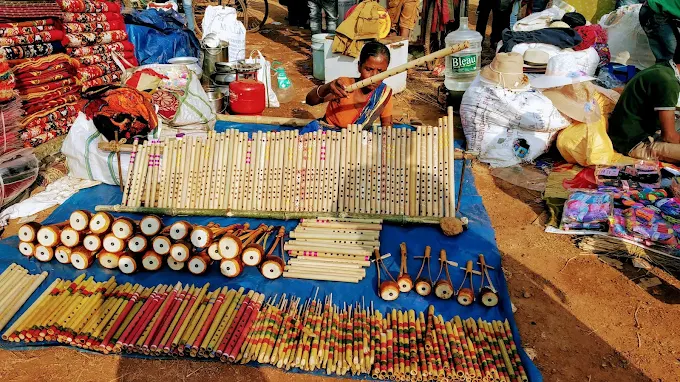
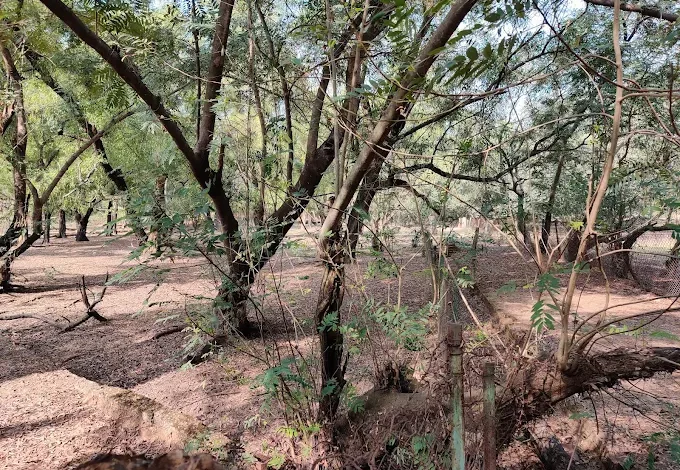
12. Raipur Rajbari
In 1863, Debendranath Tagore meditated under a Chatim tree in Bolpur, experiencing an unmatched sense of peace. Inspired by this, he decided to purchase the surrounding land and transform it into a place of tranquility, which he named Santiniketan. The land, originally owned by Bhuban Mohan Singha of Raipur, a village about 6km southwest of Bolpur, was reportedly sold to Debendranath for a symbolic amount of ₹1, according to local lore. He built a guesthouse on this land, which marked the beginning of Santiniketan. Under the leadership of his renowned son, Rabindranath Tagore, the area evolved into a university town, taking on the same name.
Raipur, in the Birbhum district, had been the ancestral home of the Singha family for generations. Their wealth and influence grew significantly, and at its peak, their zamindari extended across much of Birbhum. The Singhas constructed a grand mansion with three wings, comprising an impressive 120 rooms.
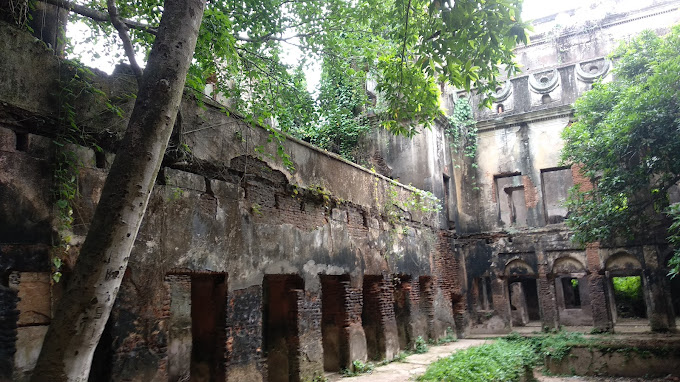
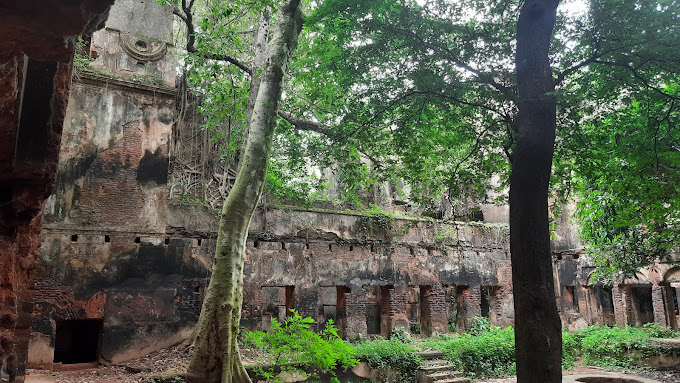
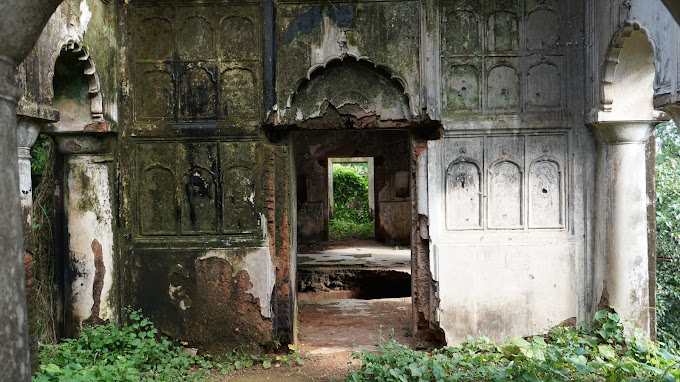
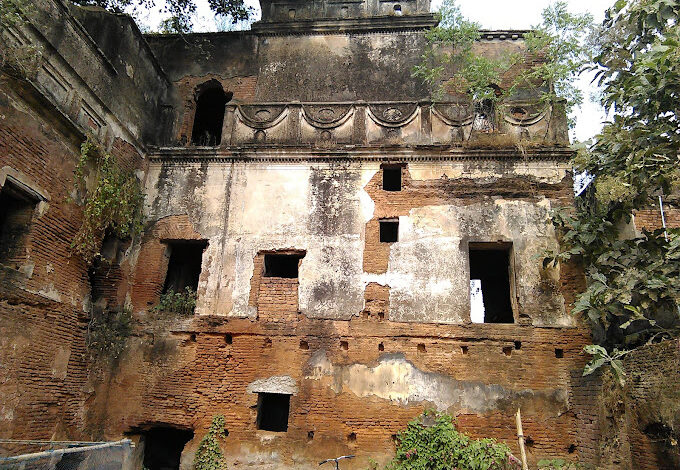
Bolpur Santiniketan is more than just a place; it’s an experience waiting to be explored. The town captivates visitors with its rich culture, stunning natural landscapes, and esteemed educational institutions. Every traveler will find something to delight in here. Stay at the top hotel in Bolpur Santiniketan for a perfect blend of vibrant atmosphere and tranquility. Plan your trip and immerse yourself in the timeless allure of Bolpur Santiniketan for a truly memorable journey.




